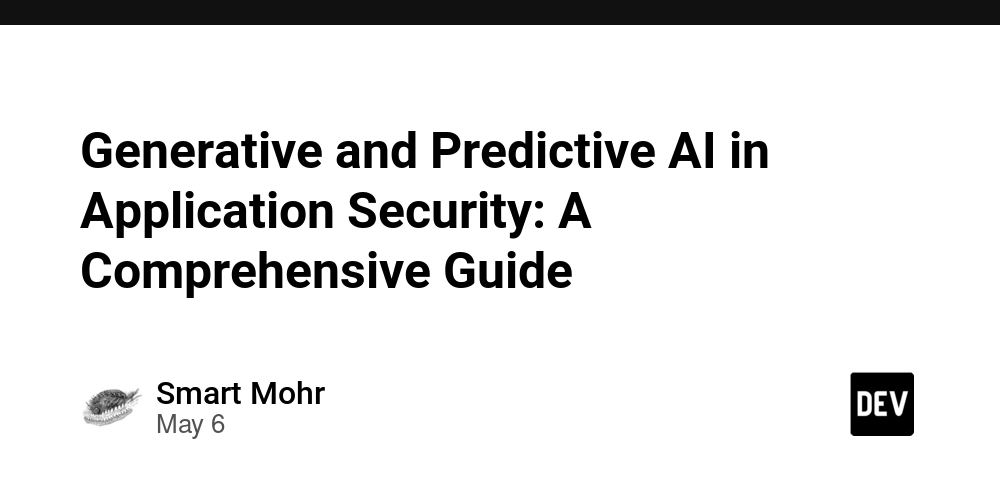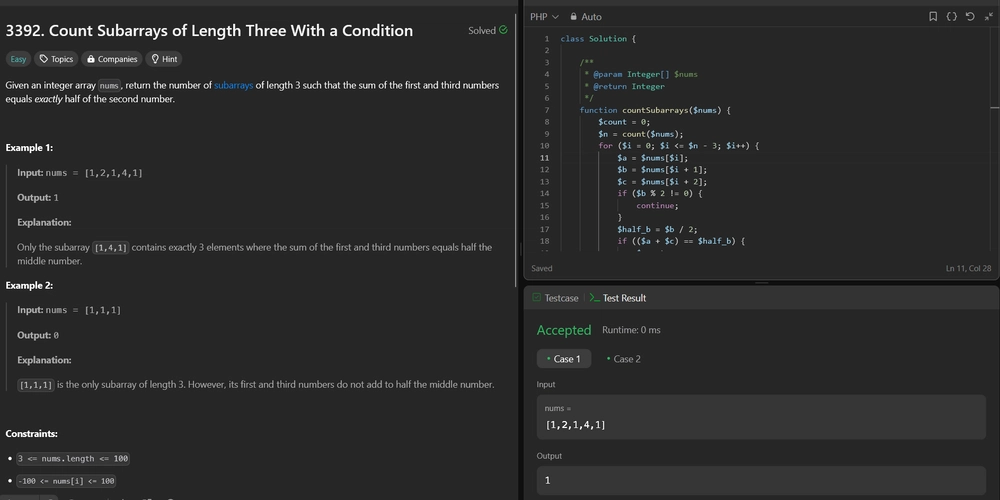Generative and Predictive AI in Application Security: A Comprehensive Guide
AI is transforming application security (AppSec) by facilitating more sophisticated bug discovery, test automation, and even self-directed attack surface scanning. This write-up provides an thorough narrative on how generative and predictive AI are being applied in AppSec, crafted for security professionals and stakeholders as well. We’ll delve into the evolution of AI in AppSec, its modern capabilities, limitations, the rise of “agentic” AI, and forthcoming directions. Let’s start our journey through the past, present, and coming era of AI-driven application security. History and Development of AI in AppSec Foundations of Automated Vulnerability Discovery Long before AI became a trendy topic, security teams sought to automate bug detection. In the late 1980s, Dr. Barton Miller’s groundbreaking work on fuzz testing showed the effectiveness of automation. His 1988 class project randomly generated inputs to crash UNIX programs — “fuzzing” exposed that roughly a quarter to a third of utility programs could be crashed with random data. This straightforward black-box approach paved the foundation for future security testing techniques. By the 1990s and early 2000s, developers employed scripts and scanning applications to find common flaws. Early static scanning tools functioned like advanced grep, searching code for insecure functions or embedded secrets. Though these pattern-matching methods were helpful, they often yielded many spurious alerts, because any code matching a pattern was labeled without considering context. Growth of Machine-Learning Security Tools During the following years, scholarly endeavors and commercial platforms grew, transitioning from hard-coded rules to intelligent interpretation. ML gradually entered into the application security realm. Early examples included deep learning models for anomaly detection in network traffic, and probabilistic models for spam or phishing — not strictly application security, but demonstrative of the trend. Meanwhile, code scanning tools evolved with data flow analysis and control flow graphs to observe how information moved through an app. A key concept that took shape was the Code Property Graph (CPG), merging structural, control flow, and data flow into a comprehensive graph. This approach enabled more contextual vulnerability assessment and later won an IEEE “Test of Time” recognition. By depicting a codebase as nodes and edges, analysis platforms could detect intricate flaws beyond simple keyword matches. In 2016, DARPA’s Cyber Grand Challenge exhibited fully automated hacking machines — capable to find, confirm, and patch security holes in real time, minus human assistance. The winning system, “Mayhem,” combined advanced analysis, symbolic execution, and some AI planning to go head to head against human hackers. This event was a notable moment in autonomous cyber defense. AI Innovations for Security Flaw Discovery With the growth of better ML techniques and more training data, machine learning for security has taken off. Major corporations and smaller companies together have attained milestones. One notable leap involves machine learning models predicting software vulnerabilities and exploits. An example is the Exploit Prediction Scoring System (EPSS), which uses a vast number of features to predict which CVEs will get targeted in the wild. This approach helps security teams tackle the most critical weaknesses. In detecting code flaws, deep learning methods have been trained with enormous codebases to identify insecure structures. Microsoft, Alphabet, and other groups have revealed that generative LLMs (Large Language Models) enhance security tasks by creating new test cases. For example, Google’s security team applied LLMs to generate fuzz tests for OSS libraries, increasing coverage and finding more bugs with less manual intervention. Modern AI Advantages for Application Security Today’s application security leverages AI in two broad categories: generative AI, producing new outputs (like tests, code, or exploits), and predictive AI, scanning data to detect or project vulnerabilities. These capabilities reach every phase of application security processes, from code inspection to dynamic testing. How Generative AI Powers Fuzzing & Exploits Generative AI produces new data, such as attacks or payloads that expose vulnerabilities. This is evident in intelligent fuzz test generation. Classic fuzzing uses random or mutational inputs, while generative models can generate more strategic tests. Google’s OSS-Fuzz team tried large language models to develop specialized test harnesses for open-source codebases, increasing vulnerability discovery. In the same vein, generative AI can help in constructing exploit scripts. Researchers carefully demonstrate that AI enable the creation of demonstration code once a vulnerability is understood. On the attacker side, red teams may use generative AI to expand phishing campaigns. For defenders, tea

AI is transforming application security (AppSec) by facilitating more sophisticated bug discovery, test automation, and even self-directed attack surface scanning. This write-up provides an thorough narrative on how generative and predictive AI are being applied in AppSec, crafted for security professionals and stakeholders as well. We’ll delve into the evolution of AI in AppSec, its modern capabilities, limitations, the rise of “agentic” AI, and forthcoming directions. Let’s start our journey through the past, present, and coming era of AI-driven application security.
History and Development of AI in AppSec
Foundations of Automated Vulnerability Discovery
Long before AI became a trendy topic, security teams sought to automate bug detection. In the late 1980s, Dr. Barton Miller’s groundbreaking work on fuzz testing showed the effectiveness of automation. His 1988 class project randomly generated inputs to crash UNIX programs — “fuzzing” exposed that roughly a quarter to a third of utility programs could be crashed with random data. This straightforward black-box approach paved the foundation for future security testing techniques. By the 1990s and early 2000s, developers employed scripts and scanning applications to find common flaws. Early static scanning tools functioned like advanced grep, searching code for insecure functions or embedded secrets. Though these pattern-matching methods were helpful, they often yielded many spurious alerts, because any code matching a pattern was labeled without considering context.
Growth of Machine-Learning Security Tools
During the following years, scholarly endeavors and commercial platforms grew, transitioning from hard-coded rules to intelligent interpretation. ML gradually entered into the application security realm. Early examples included deep learning models for anomaly detection in network traffic, and probabilistic models for spam or phishing — not strictly application security, but demonstrative of the trend. Meanwhile, code scanning tools evolved with data flow analysis and control flow graphs to observe how information moved through an app.
A key concept that took shape was the Code Property Graph (CPG), merging structural, control flow, and data flow into a comprehensive graph. This approach enabled more contextual vulnerability assessment and later won an IEEE “Test of Time” recognition. By depicting a codebase as nodes and edges, analysis platforms could detect intricate flaws beyond simple keyword matches.
In 2016, DARPA’s Cyber Grand Challenge exhibited fully automated hacking machines — capable to find, confirm, and patch security holes in real time, minus human assistance. The winning system, “Mayhem,” combined advanced analysis, symbolic execution, and some AI planning to go head to head against human hackers. This event was a notable moment in autonomous cyber defense.
AI Innovations for Security Flaw Discovery
With the growth of better ML techniques and more training data, machine learning for security has taken off. Major corporations and smaller companies together have attained milestones. One notable leap involves machine learning models predicting software vulnerabilities and exploits. An example is the Exploit Prediction Scoring System (EPSS), which uses a vast number of features to predict which CVEs will get targeted in the wild. This approach helps security teams tackle the most critical weaknesses.
In detecting code flaws, deep learning methods have been trained with enormous codebases to identify insecure structures. Microsoft, Alphabet, and other groups have revealed that generative LLMs (Large Language Models) enhance security tasks by creating new test cases. For example, Google’s security team applied LLMs to generate fuzz tests for OSS libraries, increasing coverage and finding more bugs with less manual intervention.
Modern AI Advantages for Application Security
Today’s application security leverages AI in two broad categories: generative AI, producing new outputs (like tests, code, or exploits), and predictive AI, scanning data to detect or project vulnerabilities. These capabilities reach every phase of application security processes, from code inspection to dynamic testing.
How Generative AI Powers Fuzzing & Exploits
Generative AI produces new data, such as attacks or payloads that expose vulnerabilities. This is evident in intelligent fuzz test generation. Classic fuzzing uses random or mutational inputs, while generative models can generate more strategic tests. Google’s OSS-Fuzz team tried large language models to develop specialized test harnesses for open-source codebases, increasing vulnerability discovery.
In the same vein, generative AI can help in constructing exploit scripts. Researchers carefully demonstrate that AI enable the creation of demonstration code once a vulnerability is understood. On the attacker side, red teams may use generative AI to expand phishing campaigns. For defenders, teams use machine learning exploit building to better test defenses and implement fixes.
Predictive AI for Vulnerability Detection and Risk Assessment
Predictive AI analyzes information to spot likely bugs. Unlike static rules or signatures, a model can infer from thousands of vulnerable vs. safe software snippets, recognizing patterns that a rule-based system might miss. This approach helps indicate suspicious patterns and predict the risk of newly found issues.
Vulnerability prioritization is an additional predictive AI use case. The EPSS is one case where a machine learning model orders CVE entries by the chance they’ll be leveraged in the wild. This helps security professionals focus on the top 5% of vulnerabilities that represent the greatest risk. Some modern AppSec solutions feed commit data and historical bug data into ML models, predicting which areas of an system are especially vulnerable to new flaws.
Merging AI with SAST, DAST, IAST
Classic SAST tools, DAST tools, and instrumented testing are increasingly augmented by AI to improve speed and effectiveness.
SAST examines code for security issues in a non-runtime context, but often triggers a slew of false positives if it doesn’t have enough context. AI contributes by triaging notices and filtering those that aren’t genuinely exploitable, through smart control flow analysis. Tools for example Qwiet AI and others use a Code Property Graph and AI-driven logic to judge reachability, drastically lowering the noise.
DAST scans a running app, sending attack payloads and observing the reactions. AI enhances DAST by allowing dynamic scanning and evolving test sets. The AI system can interpret multi-step workflows, modern app flows, and APIs more accurately, broadening detection scope and reducing missed vulnerabilities.
IAST, which instruments the application at runtime to log function calls and data flows, can provide volumes of telemetry. An AI model can interpret that data, finding vulnerable flows where user input affects a critical sink unfiltered. By combining IAST with ML, false alarms get removed, and only actual risks are shown.
Code Scanning Models: Grepping, Code Property Graphs, and Signatures
Modern code scanning engines usually blend several approaches, each with its pros/cons:
Grepping (Pattern Matching): The most basic method, searching for tokens or known patterns (e.g., suspicious functions). Simple but highly prone to false positives and false negatives due to lack of context.
Signatures (Rules/Heuristics): Signature-driven scanning where experts encode known vulnerabilities. It’s good for established bug classes but limited for new or obscure weakness classes.
Code Property Graphs (CPG): A more modern semantic approach, unifying syntax tree, CFG, and data flow graph into one representation. Tools query the graph for critical data paths. Combined with ML, it can detect zero-day patterns and reduce noise via reachability analysis.
In real-life usage, providers combine these methods. They still use signatures for known issues, but they enhance them with graph-powered analysis for semantic detail and ML for advanced detection.
Securing Containers & Addressing Supply Chain Threats
As organizations embraced Docker-based architectures, container and open-source library security gained priority. AI helps here, too:
Container Security: AI-driven container analysis tools inspect container files for known security holes, misconfigurations, or sensitive credentials. Some solutions evaluate whether vulnerabilities are actually used at deployment, lessening the excess alerts. Meanwhile, adaptive threat detection at runtime can flag unusual container actions (e.g., unexpected network calls), catching intrusions that traditional tools might miss.
Supply Chain Risks: With millions of open-source libraries in npm, PyPI, Maven, etc., human vetting is infeasible. AI can monitor package behavior for malicious indicators, detecting typosquatting. Machine learning models can also rate the likelihood a certain component might be compromised, factoring in vulnerability history. This allows teams to prioritize the most suspicious supply chain elements. In parallel, AI can watch for anomalies in build pipelines, confirming that only legitimate code and dependencies are deployed.
Obstacles and Drawbacks
Though AI introduces powerful advantages to AppSec, it’s not a magical solution. Teams must understand the shortcomings, such as false positives/negatives, feasibility checks, algorithmic skew, and handling zero-day threats.
Limitations of Automated Findings
All automated security testing encounters false positives (flagging harmless code) and false negatives (missing real vulnerabilities). AI can reduce the former by adding semantic analysis, yet it risks new sources of error. A model might incorrectly detect issues or, if not trained properly, miss a serious bug. Hence, human supervision often remains necessary to confirm accurate results.
agentic ai in application security Determining Real-World Impact
Even if AI flags a insecure code path, that doesn’t guarantee malicious actors can actually exploit it. Evaluating real-world exploitability is challenging. Some suites attempt constraint solving to prove or negate exploit feasibility. However, full-blown runtime proofs remain less widespread in commercial solutions. Therefore, many AI-driven findings still need human judgment to deem them low severity.
Data Skew and Misclassifications
AI models learn from collected data. If that data over-represents certain coding patterns, or lacks cases of novel threats, the AI could fail to anticipate them. Additionally, a system might disregard certain vendors if the training set suggested those are less likely to be exploited. Continuous retraining, diverse data sets, and regular reviews are critical to address this issue.
Dealing with the Unknown
Machine learning excels with patterns it has processed before. A wholly new vulnerability type can slip past AI if it doesn’t match existing knowledge. Malicious parties also work with adversarial AI to outsmart defensive tools. Hence, AI-based solutions must adapt constantly. Some developers adopt anomaly detection or unsupervised ML to catch abnormal behavior that classic approaches might miss. Yet, even these unsupervised methods can overlook cleverly disguised zero-days or produce red herrings.
Emergence of Autonomous AI Agents
A recent term in the AI domain is agentic AI — intelligent programs that not only produce outputs, but can execute objectives autonomously. In cyber defense, this means AI that can control multi-step actions, adapt to real-time feedback, and make decisions with minimal human oversight.
What is Agentic AI?
Agentic AI programs are given high-level objectives like “find weak points in this system,” and then they determine how to do so: aggregating data, performing tests, and shifting strategies in response to findings. Consequences are wide-ranging: we move from AI as a tool to AI as an self-managed process.
Offensive vs. Defensive AI Agents
Offensive (Red Team) Usage: Agentic AI can initiate red-team exercises autonomously. Security firms like FireCompass provide an AI that enumerates vulnerabilities, crafts attack playbooks, and demonstrates compromise — all on its own. Similarly, open-source “PentestGPT” or similar solutions use LLM-driven logic to chain scans for multi-stage exploits.
Defensive (Blue Team) Usage: On the safeguard side, AI agents can monitor networks and independently respond to suspicious events (e.g., isolating a compromised host, updating firewall rules, or analyzing logs). Some security orchestration platforms are implementing “agentic playbooks” where the AI makes decisions dynamically, in place of just executing static workflows.
AI-Driven Red Teaming
Fully agentic penetration testing is the ambition for many in the AppSec field. Tools that methodically enumerate vulnerabilities, craft attack sequences, and report them almost entirely automatically are emerging as a reality. Notable achievements from DARPA’s Cyber Grand Challenge and new agentic AI indicate that multi-step attacks can be chained by autonomous solutions.
Potential Pitfalls of AI Agents
With great autonomy comes risk. An autonomous system might inadvertently cause damage in a live system, or an malicious party might manipulate the system to initiate destructive actions. Comprehensive guardrails, sandboxing, and manual gating for risky tasks are essential. Nonetheless, agentic AI represents the future direction in security automation.
Where AI in Application Security is Headed
AI’s impact in AppSec will only grow. We project major changes in the near term and longer horizon, with innovative compliance concerns and responsible considerations.
Short-Range Projections
Over the next handful of years, companies will embrace AI-assisted coding and security more broadly. Developer tools will include AppSec evaluations driven by ML processes to warn about potential issues in real time. AI-based fuzzing will become standard. Continuous security testing with self-directed scanning will augment annual or quarterly pen tests. Expect improvements in false positive reduction as feedback loops refine machine intelligence models.
Cybercriminals will also use generative AI for phishing, so defensive countermeasures must adapt. We’ll see phishing emails that are nearly perfect, necessitating new intelligent scanning to fight machine-written lures.
Regulators and governance bodies may introduce frameworks for transparent AI usage in cybersecurity. For example, rules might call for that organizations log AI recommendations to ensure accountability.
Futuristic Vision of AppSec
In the long-range timespan, AI may overhaul the SDLC entirely, possibly leading to:
AI-augmented development: Humans co-author with AI that produces the majority of code, inherently including robust checks as it goes.
Automated vulnerability remediation: Tools that don’t just flag flaws but also fix them autonomously, verifying the viability of each fix.
Proactive, continuous defense: AI agents scanning infrastructure around the clock, preempting attacks, deploying security controls on-the-fly, and contesting adversarial AI in real-time.
Secure-by-design architectures: AI-driven blueprint analysis ensuring applications are built with minimal attack surfaces from the foundation.
We also foresee that AI itself will be strictly overseen, with standards for AI usage in safety-sensitive industries. This might mandate transparent AI and continuous monitoring of AI pipelines.
AI in Compliance and Governance
As AI assumes a core role in cyber defenses, compliance frameworks will evolve. We may see:
AI-powered compliance checks: Automated verification to ensure standards (e.g., PCI DSS, SOC 2) are met continuously.
Governance of AI models: Requirements that organizations track training data, prove model fairness, and document AI-driven findings for regulators.
Incident response oversight: If an AI agent performs a defensive action, who is responsible? Defining accountability for AI actions is a thorny issue that legislatures will tackle.
Moral Dimensions and Threats of AI Usage
Apart from compliance, there are ethical questions. Using AI for employee monitoring risks privacy concerns. Relying solely on AI for life-or-death decisions can be dangerous if the AI is biased. Meanwhile, adversaries adopt AI to evade detection. Data poisoning and AI exploitation can mislead defensive AI systems.
Adversarial AI represents a heightened threat, where bad agents specifically target ML infrastructures or use machine intelligence to evade detection. Ensuring the security of training datasets will be an key facet of AppSec in the future.
Closing Remarks
Generative and predictive AI have begun revolutionizing software defense. We’ve explored the evolutionary path, contemporary capabilities, challenges, agentic AI implications, and future outlook. The key takeaway is that AI acts as a mighty ally for AppSec professionals, helping accelerate flaw discovery, prioritize effectively, and handle tedious chores.
Yet, it’s not a universal fix. False positives, training data skews, and zero-day weaknesses require skilled oversight. The arms race between attackers and protectors continues; AI is merely the newest arena for that conflict. Organizations that embrace AI responsibly — aligning it with expert analysis, regulatory adherence, and regular model refreshes — are best prepared to thrive in the evolving landscape of application security.
Ultimately, the promise of AI is a more secure digital landscape, where security flaws are detected early and remediated swiftly, and where security professionals can match the rapid innovation of adversaries head-on. With sustained research, partnerships, and growth in AI techniques, that scenario could be closer than we think.
agentic ai in application security















































































